Things to Do in Tulum: What to See, Eat & Explore
Looking for the best things to do in Tulum? This magical coastal town on Mexico’s Yucatan Peninsula offers far more than just Instagram-worthy beaches. As a destination that seamlessly blends ancient Mayan history, natural wonders, and bohemian vibes, Tulum rewards travelers who venture beyond the obvious attractions.
Having explored every corner of this Caribbean paradise, I’ve compiled this comprehensive guide to help you discover both the must-see highlights and the lesser-known treasures that make Tulum truly special. From ancient ruins perched on seaside cliffs to hidden cenotes tucked away in the jungle, prepare to experience the authentic heart of this enchanting destination.
Where Is Tulum Located?
Tulum is a coastal town on the Caribbean side of Mexico’s Yucatán Peninsula, about two hours south of Cancún by car. It sits in the state of Quintana Roo and is part of the famous Riviera Maya. Known for its white-sand beaches, turquoise water, and nearby Mayan ruins, Tulum blends laid-back beach vibes with rich cultural history.
Cultural Attractions in Tulum
Tulum’s rich cultural heritage dates back to the ancient Maya civilization, offering visitors a fascinating glimpse into Mexico’s storied past. These cultural sites aren’t just historical landmarks—they’re windows into a sophisticated civilization that once thrived in this tropical paradise.
Explore the Iconic Tulum Ruins
The Tulum Archaeological Site is arguably the most spectacularly situated Mayan ruin in Mexico. Perched on 40-foot cliffs overlooking the Caribbean Sea, these 13th-century structures create a breathtaking contrast against the turquoise waters below. The main structure, El Castillo, served as both a temple and a lighthouse, guiding Mayan trading canoes through a break in the barrier reef.
For the best experience, arrive early (around 8 AM) to beat both the crowds and the midday heat. The site opens at 8 AM and closes at 5 PM, with the last entry at 4:30 PM. The entrance fee is approximately 80 pesos (about $4 USD), though you’ll need to pay an additional 45 pesos for the conservation fee.
Visit the Coba Archaeological Site
Just a 45-minute drive from Tulum lies Coba, an ancient Mayan city that once housed over 50,000 people. Unlike Tulum’s compact seaside ruins, Coba sprawls through the jungle and offers a more immersive archaeological experience. The site’s main attraction is Nohoch Mul, the tallest pyramid in the Yucatan Peninsula at 137 feet high.
What makes Coba special is that visitors can still climb the main pyramid (one of the few remaining climbable ruins in Mexico), offering spectacular views of the endless jungle canopy from the top. The site is vast, covering over 80 square kilometers, so consider renting a bicycle at the entrance or hiring a bicycle taxi to navigate between structures.
Discover the Muyil Ruins
For a quieter adventure, check out the Muyil ruins just 15 minutes south of Tulum. Tucked in the jungle, these ancient Mayan structures date back to 300 BCE. What sets Muyil apart is its peaceful vibe and easy access to the Sian Ka’an Biosphere. After wandering the site, take the boardwalk through the forest to a lookout over the lagoon—then hop on a boat tour through Mayan-made canals for a truly unique experience.

Natural Wonders Around Tulum
Tulum’s natural landscape is a paradise for outdoor enthusiasts and nature lovers. From crystal-clear cenotes to pristine beaches and protected biospheres, the region’s natural wonders offer unforgettable experiences for every type of traveler.
Swim in Secret Cenotes
The Yucatan Peninsula is home to thousands of cenotes—natural sinkholes formed when limestone bedrock collapses, revealing groundwater pools beneath. These crystal-clear freshwater pools were sacred to the ancient Maya, who believed them to be gateways to the underworld. Today, they offer visitors some of the most magical swimming experiences in Mexico.
While Gran Cenote and Dos Ojos are the most famous (and crowded), there are several lesser-known cenotes that provide equally stunning experiences with fewer tourists:
- Cenote Calavera – Known as the “Temple of Doom,” this cenote features a small opening you can jump through into the water below.
- Cenote Car Wash – Named after taxi drivers who used to wash their cars here, this open cenote is perfect for swimming and spotting small fish and turtles.
- Cenote Zacil-Ha – A smaller cenote with platforms for jumping and a zip line for the adventurous.
- Cenote Escondido – As the name suggests (“Hidden Cenote”), this is a more secluded option with crystal clear waters.
Explore the Sian Ka’an Biosphere Reserve
Just south of Tulum, the Sian Ka’an Biosphere Reserve is a wild, untouched paradise of jungle, mangroves, and reef. Its name means “Origin of the Sky”—and it feels like it. You can spot dolphins, birds, even big cats, float through ancient Mayan canals, or visit the tucked-away Muyil ruins—all in one unforgettable day.

Relax at Kaan Luum Lagoon
One of Tulum’s best-kept secrets is Laguna Kaan Luum, a stunning cenote-fed lagoon located just 9 kilometers south of town. What makes this spot special is the dramatic color contrast—shallow turquoise waters around the edges gradually transition to a deep blue in the center where a 80-meter deep cenote is located.
The lagoon offers a more relaxed alternative to the beaches, with wooden docks, swings, and hammocks over the water. The entrance fee is around 300 pesos ($15 USD), and facilities include bathrooms, changing rooms, and a small snack bar. For the best experience, visit on weekdays when it’s less crowded with local visitors.

Visit Tulum’s Pristine Beaches
Tulum’s coastline features some of the most beautiful beaches in the Caribbean, with powdery white sand and crystal-clear turquoise waters. While many Tulum beaches are accessible through hotels and beach clubs, there are several public beaches that offer the same stunning beauty without the price tag:
- Playa Paraiso – Often ranked among the best beaches in Mexico, this public Tulum beach offers picture-perfect Caribbean views.
- Las Palmas Beach – A more secluded option south of the hotel zone, perfect for those seeking tranquility.
- Playa Ruinas – The small beach below the Tulum ruins, offering the iconic view of ancient structures above turquoise waters.
- Santa Fe Beach – Located north of the hotel zone, this beach tends to be less crowded than others closer to town.

Food & Nightlife in Tulum
Tulum’s culinary scene has exploded in recent years, offering everything from street tacos to world-class fine dining. Similarly, the nightlife ranges from laid-back beach bars to pulsing jungle parties, ensuring there’s something for every type of traveler.
Sample Authentic Yucatecan Cuisine
The Yucatan Peninsula has a distinctive culinary tradition that differs from what many consider “typical Mexican food.” Influenced by Mayan, Caribbean, European, and Middle Eastern flavors, Yucatecan cuisine offers unique dishes you won’t find elsewhere in Mexico:
- Cochinita Pibil – Slow-roasted pork marinated in achiote and sour orange juice, traditionally cooked in an underground pit.
- Sopa de Lima – A tangy chicken soup flavored with local lime, topped with crispy tortilla strips.
- Panuchos and Salbutes – Fried tortillas topped with turkey or chicken, pickled onions, avocado, and lettuce.
- Papadzules – Corn tortillas filled with hard-boiled eggs and covered in pumpkin seed sauce.
- Chaya – A local leafy green used in everything from smoothies to empanadas.
For authentic and affordable Yucatecan food, head to Tulum Pueblo (downtown) rather than the beach zone. Local favorites include Taquería Honorio for cochinita pibil tacos, El Asadero for traditional Mexican grilled meats, and Antojitos La Chiapaneca for budget-friendly tacos and panuchos.

Tulum Beach clubs are an integral part of Tulum’s coastal experience, offering comfortable loungers, food and drink service, music, and direct beach access. While some require steep minimum consumptions, others are more accessible with reasonable day pass options:
- Papaya Playa Project – Known for its sustainable design and weekend parties.
- Ziggy’s Beach Club – Offers a more relaxed vibe with excellent food and reasonable minimum consumption.
- Mia Restaurant & Beach Club – More affordable option with comfortable loungers and good service.
- Villa Pescadores – Located on the northern beaches with a more laid-back atmosphere and lower prices.
Most beach clubs operate from around 10 AM until sunset. During high season (December-April), it’s advisable to make reservations, especially for weekends. Many clubs will waive or reduce the entrance fee if you dine at their restaurant.

Explore Tulum’s Vibrant Nightlife
When the sun sets, Tulum transforms from a beach paradise to a vibrant nightlife destination. The scene ranges from laid-back beach bars to sophisticated cocktail lounges and energetic dance clubs:
- Batey Mojito & Guarapo Bar – Famous for fresh sugarcane mojitos, live music, and a vintage VW Beetle parked out front.
- Gitano – A jungle-chic mezcal bar with DJ sets and dancing under the stars.
- Casa Jaguar – Offers jungle vibes with craft cocktails and Thursday night parties.
- Todos Santos – A laid-back mezcaleria in town with excellent cocktails and a local vibe.
For a uniquely Tulum experience, check out the full moon parties at Papaya Playa Project or the Sunday sunset sessions at Habitas. Most venues in the beach zone close relatively early (around midnight), while bars in town can stay open later
Rent a Bike and Explore Like a Local
Tulum’s flat terrain and relatively compact size make it perfect for exploration by bicycle. Renting a bike (around 150-200 pesos per day) gives you the freedom to discover hidden spots at your own pace while avoiding taxi costs and traffic jams on the beach road.
The dedicated bike path connecting town to the beach zone makes cycling safe and pleasant. Local favorites include riding to the Tulum ruins at opening time, exploring the street art in Tulum Pueblo, or venturing to lesser-known cenotes like Cenote Escondido and Cenote Cristal that are just a short ride from town.

Visit the Tulum Art District
Tulum’s art scene feels like it’s growing out of the jungle itself — from the colorful murals in town to galleries tucked inside the hotel zone, every piece echoes the soul of the region.

Take a Traditional Temazcal Ceremony
For a deeply spiritual experience, participate in a traditional Temazcal ceremony. This pre-Hispanic sweat lodge ritual has been practiced by indigenous cultures for centuries as a purification ceremony for the body and spirit.
Led by a shaman, participants enter a dome-shaped hut where water is poured over heated volcanic rocks, creating steam. The ceremony typically lasts 1-2 hours and includes chanting, meditation, and reflection. Many hotels and wellness centers in Tulum offer Temazcal experiences, with Holistika and Yäan Wellness being among the most authentic.

Discover the Macario Gomez Community
Just 20 minutes inland from Tulum lies the small Mayan village of Macario Gomez, where visitors can experience authentic local culture away from the tourist crowds. The village is known for its artisans who create traditional crafts using techniques passed down through generations.
Visit family-run restaurants serving home-cooked Mayan dishes, shop for handmade hammocks and woodcarvings directly from the artisans, or stay in eco-cabañas for a fraction of Tulum’s beachfront prices. Don’t miss El Tabano, a jungle restaurant serving farm-to-table cuisine in a charming rustic setting.

Float Down Ancient Mayan Canals
One of the most magical experiences in the Tulum area is floating down the ancient canals in the Sian Ka’an Biosphere Reserve. These narrow waterways were hand-dug by the Maya over 1,000 years ago as trade routes connecting settlements throughout the region.
Today, visitors can don life jackets and lazily float down these crystal-clear channels, carried by the gentle current through mangroves teeming with birds and other wildlife. The experience is both relaxing and awe-inspiring, offering a unique perspective on both the natural environment and the ingenuity of the ancient Maya.

Practical Tips for Visiting Tulum
To make the most of your Tulum adventure, here are some essential tips from locals and frequent visitors that will help you navigate this popular destination like a pro.
Best Time to Visit Tulum
Tulum enjoys a tropical climate with distinct dry and rainy seasons. The best time to visit depends on your priorities:
- November to April – Dry season with perfect weather, but also the busiest and most expensive time. December and January see peak crowds and prices.
- May to October – Rainy season with higher humidity and occasional showers, but fewer tourists and lower prices. Hurricane season peaks in September and October.
- Shoulder seasons – Early November and May offer a good balance of decent weather, fewer crowds, and more reasonable prices.
For the best overall experience, consider visiting in November or April when the weather is still excellent but the high-season crowds have thinned out.

Getting Around Tulum
Tulum is divided into three main areas: Tulum Pueblo (downtown), the Hotel Zone (beach road), and the ruins area. Getting between these areas requires some planning:
- Bicycles – The most popular and eco-friendly option. Rentals cost 150-200 pesos per day from numerous shops in town.
- Taxis – Readily available but increasingly expensive. Expect to pay 150-300 pesos from town to the beach zone, depending on your destination.
- Colectivos – Shared vans that run along the main highway. Inexpensive but only useful for reaching destinations along the highway.
- Rental cars – Provide the most flexibility for exploring beyond Tulum, but parking can be limited in the beach zone.
The distance from town to the beach zone is about 3-4 kilometers, making it a pleasant 15-20 minute bike ride or a quick 5-minute taxi ride.

Where to Stay in Tulum
Tulum offers accommodations for every budget and preference, with distinct advantages to each area:
- Tulum Pueblo (Downtown) – More affordable options, authentic local atmosphere, better restaurant variety, and easy access to services. Best for budget travelers and those who prioritize local culture.
- Beach Zone/Hotel Zone – Beachfront luxury, stunning views, and the iconic Tulum aesthetic. Significantly more expensive with limited dining options. Best for those seeking a luxury beach experience.
- Middle Beach Road – A compromise between town and the beach zone, with mid-range options a short bike ride from both areas.
- Aldea Zama – A newer residential area between town and the beach with modern condos and apartments. Good for longer stays and families.

Find Your Perfect Tulum Accommodation
Book your perfect Tulum accommodation – from beachfront boutique hotels to jungle treehouses and budget-friendly options in town. Find the ideal base for your Tulum adventures!
Money and Budgeting
Tulum has become increasingly expensive in recent years, particularly in the beach zone. However, with some planning, it’s possible to visit on various budgets:
- Currency – Mexican Peso (MXN) is the official currency, though many places accept US dollars at unfavorable exchange rates. ATMs are available in town and some hotels.
- Beach Zone Prices – Expect to pay premium prices similar to major US cities. Meals can range from $15-50 USD, cocktails $10-15 USD.
- Town Prices – Much more reasonable, with meals from $5-15 USD and local beers around $2 USD.
- Entrance Fees – Most cenotes charge 150-300 pesos ($7-15 USD) entrance fees. The Tulum ruins cost around 80 pesos plus a conservation fee.
Budget travelers should stay in town, eat at local establishments, use bicycles for transportation, and visit public beaches rather than beach clubs.

Frequently Asked Questions About Things to Do in Tulum
Is Tulum safe?
Tulum is generally safe for tourists, especially in areas frequented by visitors. Like any destination, it’s important to exercise common-sense precautions: avoid displaying valuables, be aware of your surroundings (especially at night), use registered taxis, and don’t leave drinks unattended. The beach zone and downtown tourist areas have increased security presence, particularly during high season.
Most safety issues in Tulum involve petty theft rather than violent crime. The biggest risks for tourists are typically related to water safety (rip currents at beaches), road safety when cycling, and overindulgence in alcohol. Stay informed about current conditions and follow local advice for the safest experience.
What are the best things to do in Tulum for families with children?
Tulum offers plenty of family-friendly activities that children of all ages will enjoy:
- Visit cenotes with shallow areas like Gran Cenote or Cenote Zacil-Ha
- Explore the Tulum ruins during cooler morning hours
- Spend time at the calm beaches like Playa Paraiso
- Take a boat tour in the Sian Ka’an Biosphere to spot wildlife
- Visit the nearby Xel-Há or Xcaret eco-parks with dedicated children’s activities
- Enjoy a family bike ride on Tulum’s dedicated bike paths
- Take a sea turtle watching tour (seasonal)
How many days do you need to see the best things to do in Tulum?
To experience the highlights of Tulum without feeling rushed, plan for at least 3-4 days. This allows time to:
- Day 1: Explore the Tulum ruins and relax at the beaches
- Day 2: Visit 2-3 cenotes and enjoy the town
- Day 3: Take a day trip to Coba ruins or Sian Ka’an Biosphere
- Day 4: Beach day and shopping/relaxation
What should I pack for things to do in Tulum?
For a comfortable Tulum vacation, pack these essentials:
- Biodegradable sunscreen – Regular sunscreen is prohibited at cenotes and nature reserves as it damages the ecosystem
- Insect repellent – Particularly important during rainy season and for jungle activities
- Light, breathable clothing – Tulum is hot and humid year-round
- Swimwear – You’ll likely be in water daily
- Water shoes – Helpful for cenotes with rocky bottoms
- Hat and sunglasses – The Caribbean sun is intense
- Reusable water bottle – Stay hydrated and reduce plastic waste
- Light rain jacket – For unexpected showers, especially during rainy season
- Cash in pesos – Many places don’t accept cards, and ATMs can be unreliable
Is Tulum expensive compared to other Mexican destinations?
Yes, Tulum has become one of Mexico’s most expensive destinations, particularly in the beach zone. Compared to other popular Mexican destinations like Cancun, Playa del Carmen, or Puerto Vallarta, Tulum’s beachfront area commands premium prices similar to major international cities.
However, costs vary dramatically depending on where you stay, eat, and what activities you choose:
- Beach Zone: Luxury hotels range from $300-1000+ per night, meals $15-50, cocktails $10-15
- Tulum Town: Budget hotels $50-100 per night, meals $5-15, local beers $2-3
What are the best things to do in Tulum at night?
Tulum offers diverse nightlife options to suit different preferences:
- Beach Zone – Upscale restaurants with jungle settings like Hartwood and Arca, sophisticated beach clubs like Gitano and Casa Jaguar with DJ sets, and boutique hotel bars with craft cocktails
- Tulum Town – More affordable bars like Batey Mojito Bar with live music, Ki’bok Coffee for evening drinks, and local cantinas for an authentic experience
- Special Experiences – Full moon parties at Papaya Playa Project, live music at Todos Santos, and seasonal events like the Tulum Food & Wine Festival
What are the most unique things to do in Tulum that you can’t experience elsewhere?
Tulum offers several one-of-a-kind experiences that make it truly special:
- Seaside Mayan Ruins – Tulum’s archaeological site is one of the only Mayan ruins built along the coast, offering a unique combination of historical and natural beauty
- Cenote Swimming – While cenotes exist throughout the Yucatan, the concentration and variety near Tulum is exceptional
- Floating in Ancient Mayan Canals – The hand-dug channels in Sian Ka’an offer a rare chance to literally float through history
- Eco-Chic Architecture – Tulum’s distinctive design aesthetic blends luxury with sustainability in a way not found elsewhere
- SFER IK Museum – This extraordinary art space with its organic architecture creates an immersive experience unlike conventional museums
- Jungle-to-Beach Ecosystem – Few places offer such easy access to both pristine beaches and lush jungle within minutes of each other
Final Thoughts on Experiencing Tulum
Tulum offers a remarkable blend of natural beauty, ancient history, and contemporary culture that creates a truly magical destination. Whether you’re swimming in crystal-clear cenotes, exploring Mayan ruins, or simply relaxing on pristine beaches, Tulum rewards travelers who approach it with curiosity and respect for both its environment and cultural heritage.
While increasing popularity has brought changes to this once-sleepy beach town, the essence of what makes Tulum special remains accessible to those willing to venture beyond the obvious attractions in Tulum. By mixing must-see highlights with hidden gems, supporting local businesses, and embracing the laid-back rhythm of life here, you’ll discover the authentic heart of this extraordinary place.
Remember that the most memorable experiences often come from unexpected discoveries—a conversation with a local artisan, a secluded cenote found by following hand-painted signs, or a perfect sunset moment on a quiet stretch of beach. Keep your itinerary flexible, your mind open, and let Tulum’s magic unfold at its own pace.
Plan Your Perfect Mexico Vacation
Ready to experience the magic of Tulum for yourself? Explore our comprehensive guides to accommodations, flights to Tulum, and insider tips to create your dream Mexico vacation.

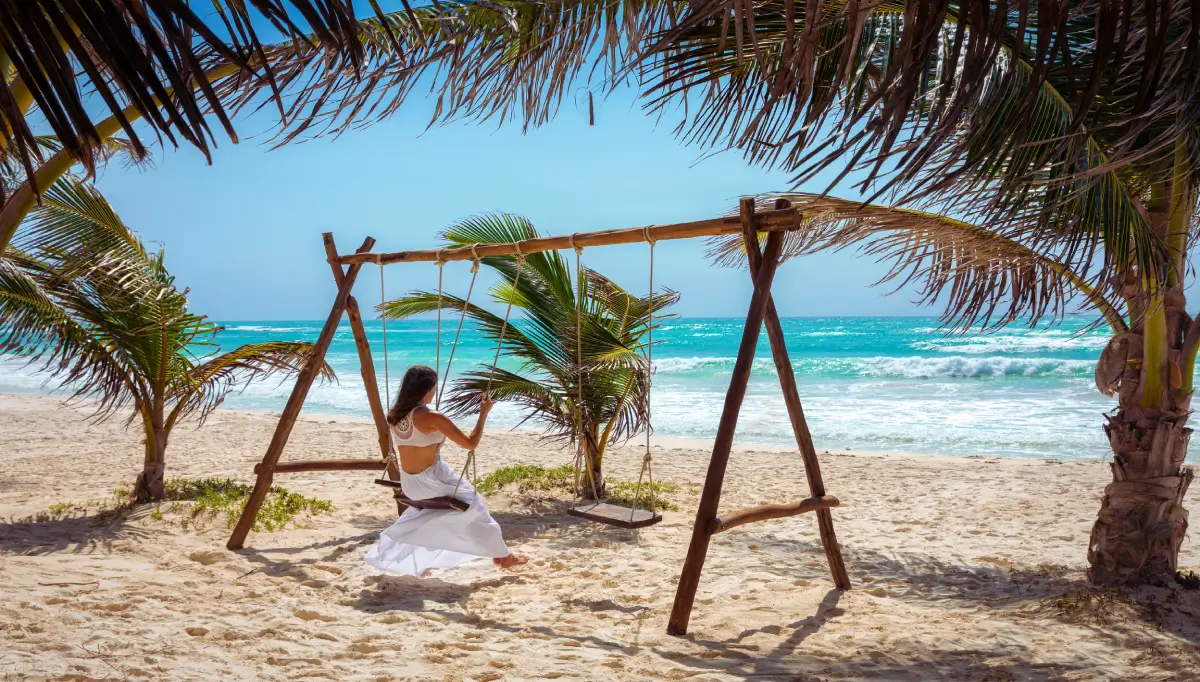

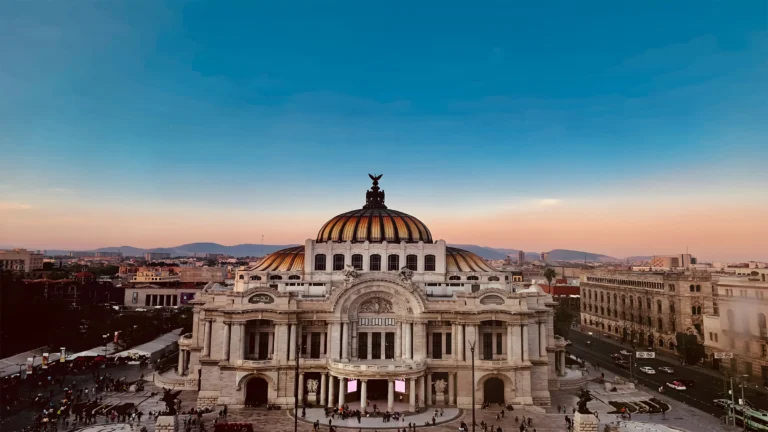
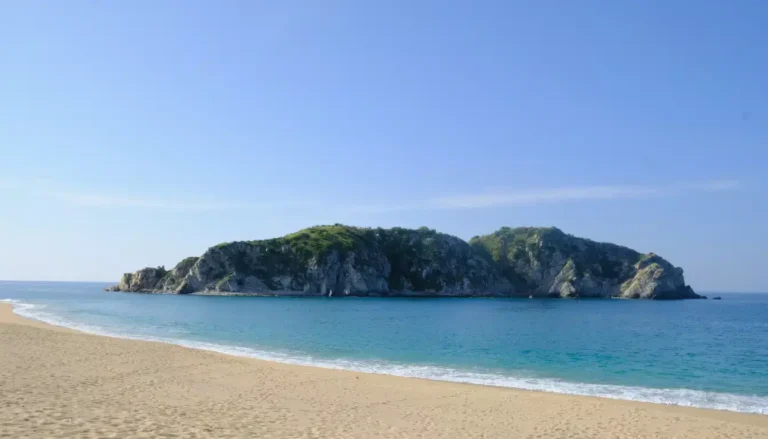

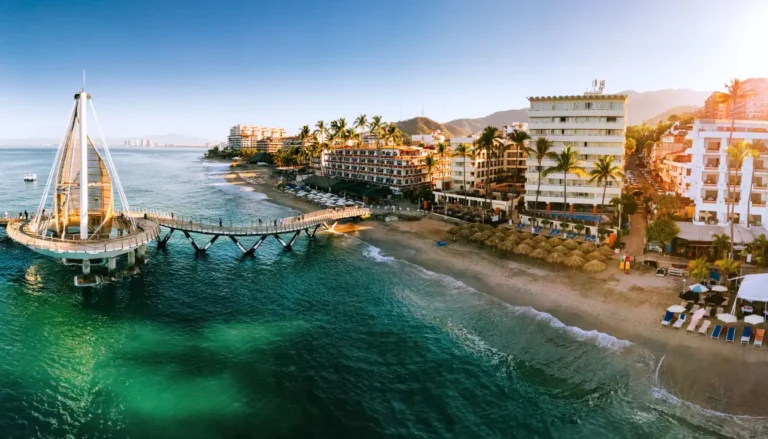
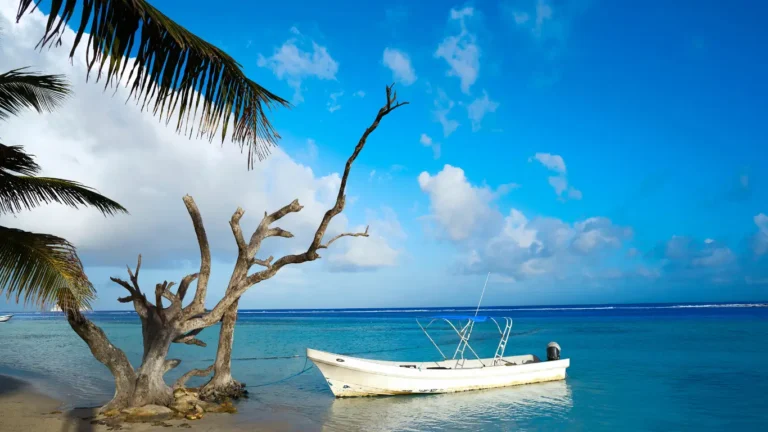
One Comment